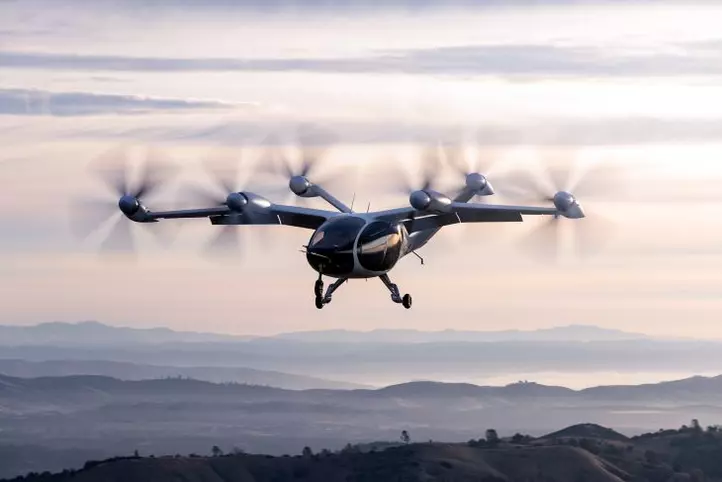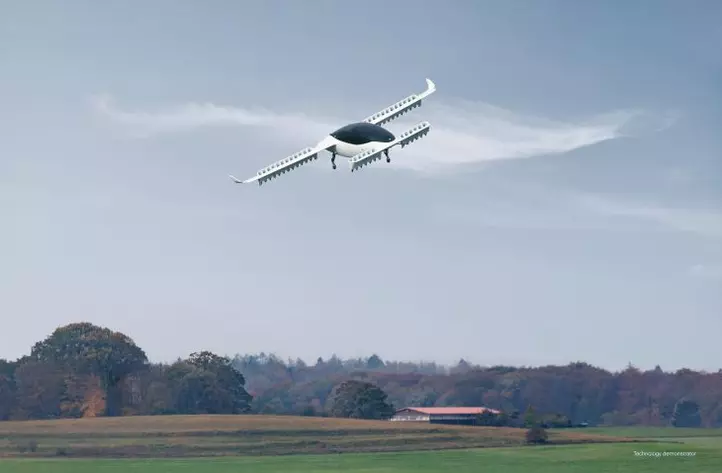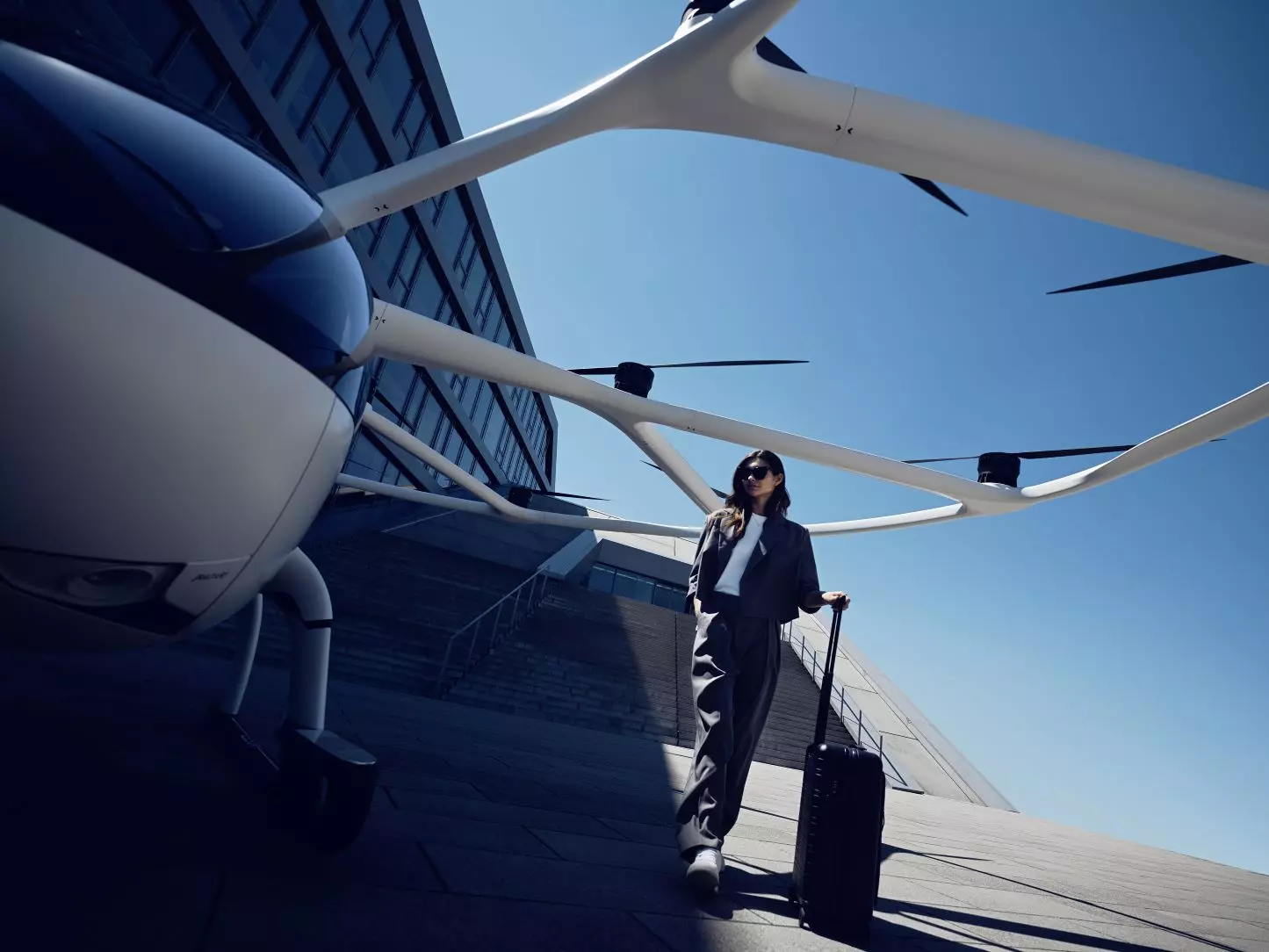A technological challenge that promises to unhinge the traditional idea of mobility from its very first appearance on the market: research and development on drones for large-scale commercial transport of people and goods heralds a major revolution in the landscape of vehicles for transport. Capable of taking off and landing vertically without the aid of a runway, these aircraft, referred to as eVTOLs (electric vertical take-off and landing), are powered by electricity and are much quieter, more versatile and “greener” than their (almost) “ancestor” helicopters. There are around 250 projects at various stages of progress worldwide, a figure that testifies to the interest of researchers and companies in the sector in achieving the model with the best operational characteristics, safety, comfort and compliance with sustainability standards. Here are four of them, among those considered most at the cutting edge.
Volocity is the aerotaxi developed by Volocopter (see image below, En), a leading German company in the field of urban air mobility (UAM). Officially unveiled in August 2021, with its 18 engines powered by lithium-ion batteries, nine units that can be replaced in just five minutes, the innovative aircraft can transport both cargo and people. In fact, it is capable of lifting a maximum load of 200 kilograms on take-off, rising into the air at a speed of 110 kilometres per hour, with a travel range of about 35 kilometres. Incredibly silent (it is four times less noisy than a helicopter) and non-polluting, Volocity lends itself to connecting passengers with major infrastructure hubs, ensuring safe and fast travel. With over a thousand flight tests carried out since 2011, the company has already obtained several preliminary certifications to fly to cities such as Hamburg, Dubai, Helsinki and Singapore.
The two-seat drone (including pilot) is also coming to Italy, thanks to the collaboration between Volocopter, Aeroporti di Roma and Atlantia: over the next two to three years, a fleet of aerotaxis will land on the peninsula to connect the “Leonardo da Vinci” international hub with various locations in the capital. The company is aiming at obtaining the type-approval certificate from the European Aviation Safety Agency within this timeframe, in order to be able to start its first commercial flights. The partnership was unveiled to the public between October and November 2021, accompanied by the display of a Volocity model at Fiumicino airport and in Piazza San Silvestro.

Alia is the name of the air taxi designed by the American company Beta, with headquarters in Vermont. The aircraft's aerodynamic design takes its cue from the conformation of Arctic terns, one of the few bird species able to soar while keeping their wings horizontal. With a wingspan of more than 15 metres, Alia is able to cover distances of around 400 kilometres, reaching a speed of 278 km/h. Fully electrically powered, it can be recharged in 50 minutes, carrying up to six cubic metres of cargo in cargo mode or six people, including the pilot, in the passenger model. Alia was the first vehicle of its kind tested by the US Air Force as part of the Agility Prime research programme. In the first six months of 2022, the group signed a number of agreements with different companies, from transport giant UPS to the urban air mobility platform Blade Urban Air Mobility and even with the pharmaceutical company United Therapeutics. At the moment, Beta is concentrating on the aerial transport of material by means of drones, before moving on to the experimentation of flights with passengers on board.
The S4 2.0 aircraft is the aerotaxi designed by the American company Joby Aviation (see image below, Courtesy of Joby Aviation. (c) Joby Aero, Inc. En). Electrically powered, the aircraft is able to fly more than 240 kilometres at a speed of around 322 km/h thanks to the thrust of six propellers, positioned on both the fixed wing and the tail, while the windows offer passengers (five people on board, including the pilot) a wide view to the outside on both sides. Conceived starting in 2009, the first scaled-down prototype dates back to 2015, while the full-size aircraft was realised in 2017. Two years later, in 2019, the company took on the challenge of flight testing, obtaining US Air Force airworthiness approval in December 2020. In the course of development, one of the two pre-production prototypes underwent an in-flight accident in February 2022, but the company continued its work and a few months later obtained certification from the US Federal Aviation Administration (FAA) to proceed with commercial on-demand aerotaxi operations, pending the official launch of the full transport service estimated for 2024.

On the other hand, the second flight test phase for the eVTOL jet prototype of the German company Lilium began last April (see image below, En). This aircraft uses 36 electric jet engines (hence the term “jet”), integrated into the moving parts of the wings, an alternative technical solution to the propellers and rotors found in previous cases. Powered by 72 battery modules, the engines enable the Lilium jet to fly 200 kilometres at a speed of 300 km/h. After Lilium's aircraft took to the skies for the first time last year in Germany, the company moved to Spain, to the ATLAS Flight Test Centre, to allow the drone to fly over a large uninhabited area at maximum speed. The drone's acoustic coating allows it to absorb a considerable amount of noise. The group is currently finalising several agreements with various companies in the industry with a view to the future production of a further version of the seven-seater aircraft.

